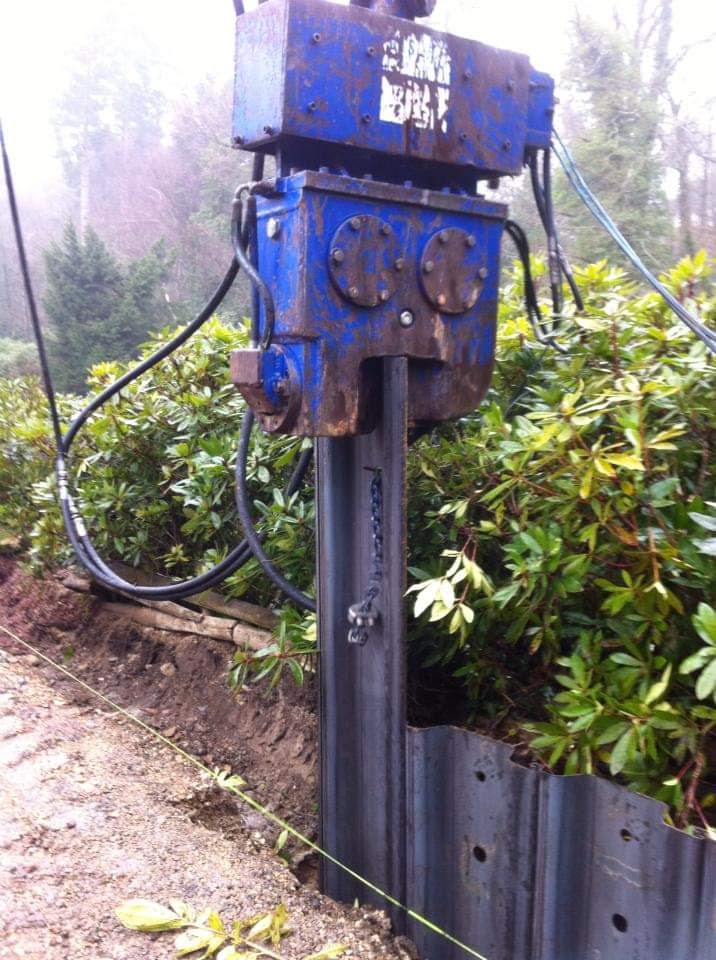Our Services

Landscaping
With 25 years of experience in the industry, you can be assured that we will landscape every property to the highest standards. Hard landscaping in Dorset & Hampshire is the use of solid building materials such as brick and stone to create breathtaking features. Common features include patios, paving, walls and garden ornaments. When designed and placed correctly, these unique features will transform your garden from boring to regal. Our team always source the best building materials and will endeavour to use reclaimed materials where possible. We always work with you from start-to-finish to achieve the result that you desire while working within your available budget.

Civil Engineering
Environmental Protection → Riverbank protection & dykes Steel sheet pile walls can be used in a variety of ways for riverbank protection and dykes. For new embankments they can ensure watertightness, support, and stabilization. They are also used to strengthen existing embankments and can serve as a cut-off wall. The required watertightness of sheet pile cut-offs is often obtained through natural deposition of soil in the interlocks, or with an additional sealing system. For the stability, sheet pile walls can be designed to mechanically reinforce the bank. Their flexibility can be very useful: they follow the potential displacement of the soil while keeping their full resistance. Lastly, sheet pile walls can also protect buildings from subsidence. In this case the sheet pile wall is driven outside the embankment, usually along the toe of the embankment.

Drainage Field
Drainage Design Services We can prepare all aspects of drainage design for your development site. We have years of experience in foul and surface water drainage design and operate the latest drainage design software. Our Engineers prepare design drawings and specifications tailored to your specific development needs and budget. We provide Sustainable Drainage Systems (SUDS) designs to discharge planning conditions for surface water drainage. We can also provide detailed foul drainage design information for either connection to the public sewerage network or onsite sewerage treatment plants. We can undertake or provide BRE365 percolation testing and site surveys to help reduce overall costs and timescales if required.

Impact Moling
IMPACT MOLING Impact Moling is ideal for installing small diameter pipes and ducts over short distances. We operate moles to install services such as Water, Electric, Telecommunications and ducts in lengths up to 25 metres. What is impact moling? Impact moling is a technique in which a non-steered percussive hammer is used to displace the soil and form a bore. The new pipe, cable or conduit is then either drawn in behind the mole as it progresses or pulled back into the bore after the mole arrives at the exit position. Advantages include Highly qualified with expert knowledge we provide a guaranteed, reliable, cost effective solution for your water supply needs, with outstanding customer care provided by competent, polite and friendly engineers. Be it a localised water main repair, water pipe replacement or water supply pipe replacement using the latest in moling technique (trenchless technology) we will provide you a cost effective alternative to traditional trenching methods, minimising the time, cost and disruption to your property.
Learn More
Septic Tanks
Septic tanks are the simplest form of waste water treatment permitted in England by the Environment Agency. Modern septic tanks are constructed from fibre glass or plastic (high density polyethylene). Older septic tanks are normally constructed from brick or blockwork and may consist of one or more chambers. The septic tank itself will retain foul solids and allow the liquid effluent to filter into a drainage field. There is some basic anaerobic treatment in a septic tank which will break down some of the organic loading. This treatment is very limited as a septic tank relies on an adequate drainage field for further treatment. The basic process of a septic tank system is reliant on a free draining subsoil and adequate space, ideally on level ground to site a drainage field. A new septic tank system must discharge to a drainage field. The Environment Agency will not permit discharge from a septic tank directly to a water course. A septic tank with any other type of soakaway would require an Environment Agency permit. It is unlikely, however, that the Environment Agency will grant a permit due to the potential of contaminating ground water.


